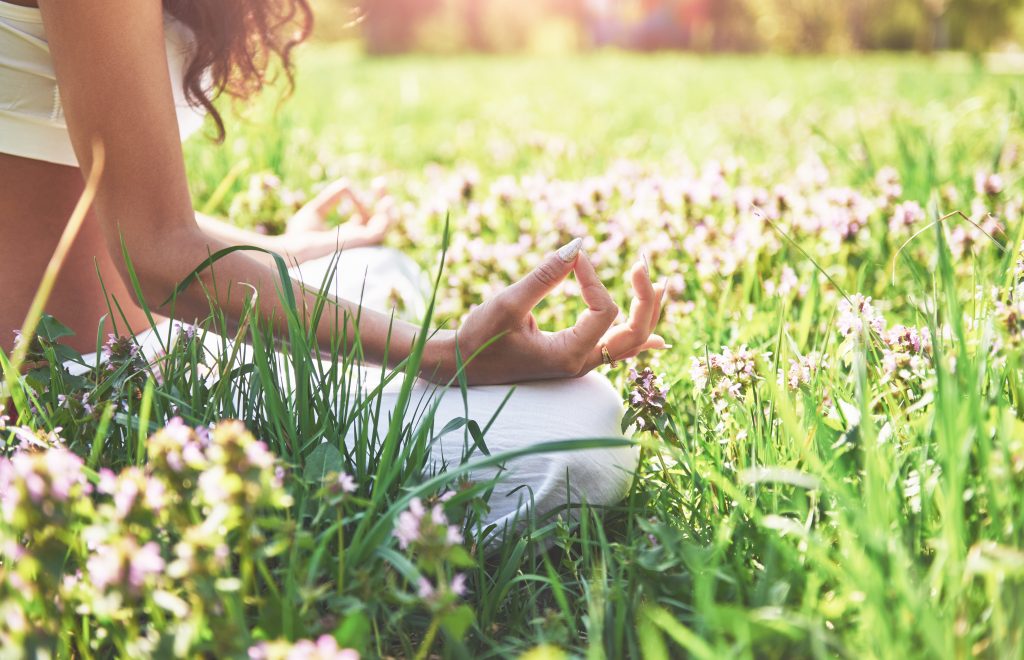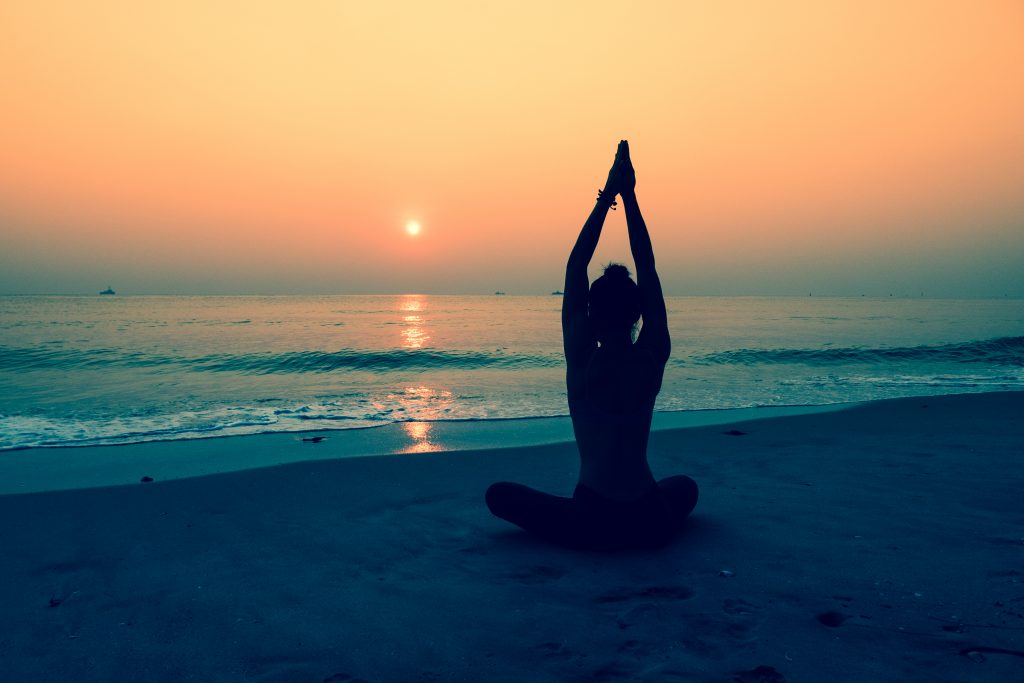What is the origin of yoga? Yoga is a subject that is still very current and present in our environment: women’s magazines, social networks, and advertising. In addition, the brands developing their lines of yoga clothing are increasingly numerous. This craze has established yoga as a practice in vogue, very trendy, and promising many benefits. But are the virtues of this practice as beneficial as they claim? Is yoga just a trend? To answer these questions, let’s go back to the origins of yoga!
What is the origin of yoga?

The origins of yoga go back to more than 5000 years in India. The first writings referring to yoga date back to 200 BC. These writings are those of Patañjali. He is an essential protagonist in the founding of yoga and the author of the Yoga Sūtras. Beyond the postures, the Yoga Sūtras trace the entire philosophy of the practice. Patanjali defines yoga as “the calming of the fluctuations of the mind.” At the origin of yoga, this author highlights this practice’s spiritual and meditative dimensions. This perspective is the opposite of the current image of yoga as a “fashionable sport.”
These writings have been completed and transformed as practitioners have culturally appropriated them. Nowadays, we mainly talk about yoga to evoke postures, but the poses are only one of the 8 pillars of yoga.
The 8 pillars at the origin of yoga
- The first pillar: This pillar refers to the way we behave with others. It is based on 5 ethical principles: non-violence, authenticity, not stealing, to stay away from distraction (close to the principle of abstinence), not being greedy.
- The second pillar refers to our behavior towards ourselves.
- The third pillar refers to the different postures, which are the preparation steps for meditation practice.
- The fourth pillar, also called “Pránáyáma“, highlights the work of the breath and breathing.
- The fifth pillar explains how to develop the ability to detach from external stimuli.
- The sixth pillar talks about the ability to focus the mind.
- The seventh pillar explains how to reach the meditative state.
- This last pillar refers to the state of absolute consciousness, union with the rest of the world in all its dimensions.
The origin of yoga and its historical study allows us to highlight the difference between today’s perception of yoga as a fashionable sport and the philosophy of yoga. We understand from these founders that yoga’s benefits go beyond the physical side of the practice of postures.
The benefits of yoga and beyond

Properly practiced, yoga is a source of multiple benefits for our bodies and mind.
- Physical benefits: muscle relaxation, muscle strengthening, balance work, toning of the figure
- Mental benefits: emotions, improvement of the capacity for concentration.
- Health benefits: lower blood pressure, better oxygenation, reduction of back problems by strengthening the muscles
Beyond its physical benefits, yoga’s development and promotion have been important since the pandemic’s beginning. Especially during lockdown. Indeed, the lockdown forced us to reinvent ourselves. The gym’s closed, and the obligation to stay at home allowed the development of home practices that do not require equipment. For example, during that period, many yoga exercises and courses were followed in video.
Yoga and pandemic

Yoga has been a resource for many people during the pandemic. Some have used it as a “sport” to keep a minimum of physical activity without having to leave home. For others, yoga has been a meditative tool to center themselves. In addition, beyond the physical aspect, yoga offers a space to refresh oneself on the fundamentals, oneself, and one’s inner resources. An approach that has allowed many to maintain a balance in their lives. But also to control their breath and follow this practice rigorously. Moreover, the meditative state brought by yoga allowed them to face change more easily and to be able to relativize in front of health measures and their consequences.
The yoga philosophy

Finally, yoga is, above all, a practice of exchange! Although the pandemic has allowed new adepts to discover this practice, we must not forget the origin of yoga and its philosophy. There is an essential difference between the experience behind a screen, starting a sport that seems trendy, and the richness of an exchange provided by a face-to-face class. Practiced rigorously and in respect of its art, yoga will bring you many benefits. So don’t wait and get started!


